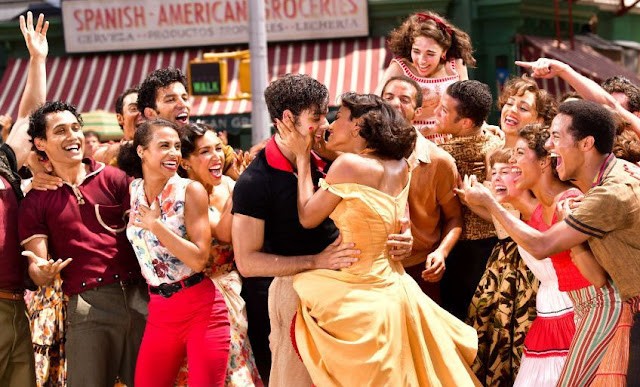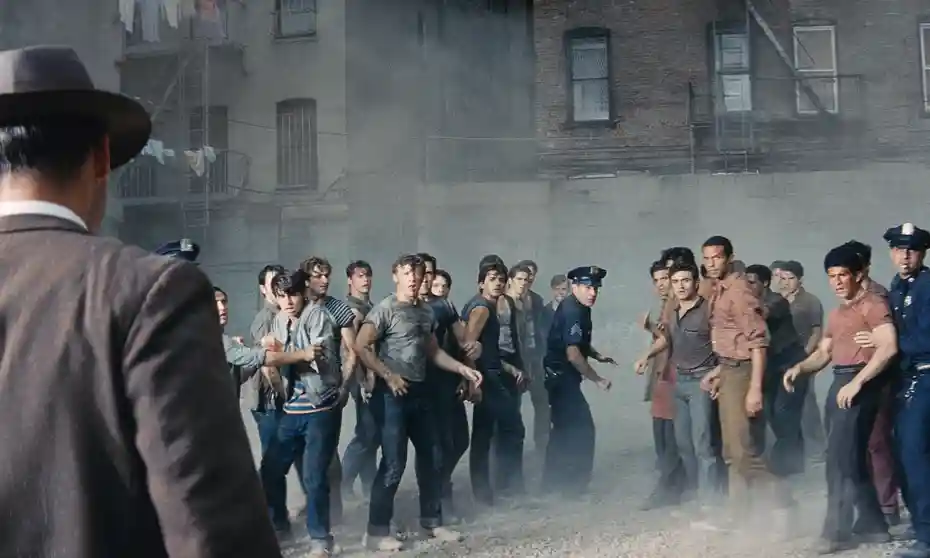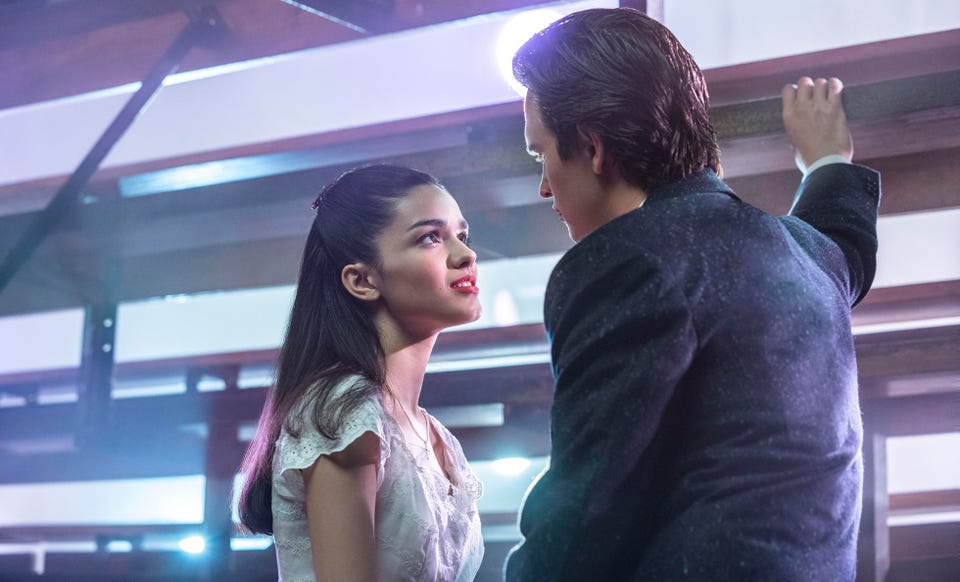Steven Spielberg’s West Side Story is a fitting and sleek homage to the original film and Broadway musical, but it doesn’t really raise the bar.
I always have deep reservations when filmmakers attempt to create a new version of a hallowed cinematic property from the past. The question I always have is whether the ends justify the means. Is it worth it to spend up to hundreds of millions of dollars to make a new version of something that audiences already love? Is it a matter of trying to update the source material for modern tastes or is it an occasion of hubris? These are the thoughts I had going into Steven Spielberg’s first full-fledged musical.
West Side Story
Directed By: Steven Spielberg
Written By: Tony Kushner
Starring: Ansel Elgort, Rachel Zegler, Ariana DeBose, Mike Faist, Rita Moreno
Release Date: December 10, 2021
Spielberg at least has the clout to pull off such a move, hubris or not. Whereas many failed re-imaginings have been helmed by no-name filmmakers trying to make their mark, West Side Story doesn’t have this initial shortcoming to overcome. In fact, Spielberg’s ability to craft cinematic spectacle is perhaps the best part of this film. He is significantly influenced by the original film – not just the story, but the look and feel. The decision to use the stage play’s original setting and time period plays to tradition, rather than try and adapt it to something more modern.
But while the film does exude the essence and plot of the 60’s Shakespearian musical, it isn’t entirely old-fashioned. The cinematography mimics the matte look of technicolor, but brings in a modern crispness and sheen courtesy of way too many lens flares. It’s an interesting contrast, almost like a compromise in production between old Hollywood and new Hollywood. There are also some attempts to bring in more modern topics into the film, which unfortunately just clutter the classic storyline. Thankfully a diverse cast brings plenty of energy and tries to make up for the original film’s biggest blunder in that regard.

To me the film’s best attribute is how it looks and feels. That old-but-new look really gives it a retro flair, and sets the film apart from other big-budget musicals that have been attempted in recent years. Spielberg is an expert at using his camera to tell a dynamic, and compelling story through motion and framing, and those skills come in good use here. Everything from the sets to the costumes and makeup speak to an impeccable production helmed by some of the most experienced people in the industry.
The film’s stellar aesthetics do wonders in the choreographed dancing scenes. There are a few moments when the film goes overboard with sweeping cameras and quick cuts. But by and large the film is at its best when it is moving and dancing. Even when the sets are (purposefully) run-down, there is a visual interest to be found. The placement of the characters in their environments, and how they interact with it, makes the city come alive. Of course the music is as memorable as ever too, so that helps keep the film’s imagery in your mind long after the credits roll.
But beyond the impressive production and the impact of one of the most beloved classic musicals being recreated for the 21st Century, West Side Story did not resonate with me as well as it could have. Spielberg’s decision to play homage to the visual textures of the original film are both positive and negative. Positive because it’s an interesting technical trick to pull off, but negative because the film feels more like a retread even if it is trying out new things. It is almost as if it hesitated to be more modernized, fearing the repercussions of not being able to honor the original(s). Yes, I realize I just praised the production design as one of the film’s best attributes, but it does come with the caveat of not really pushing the boundaries of what a modern musical could accomplish.

Second, there are some shortcomings with regards to the storytelling which are easier to forgive with a stage play, but more challenging to overcome as a feature length film. Chief among them is the way the film shortchanges its main characters. Protagonist Tony (Ansel Elgort) is best friends with the leader of the Jets gang (Mike Faist), but you wouldn’t really know that because they spend most of their time together fighting. In this version, Tony’s reluctance to re-engage with the Jets comes from a prison term which makes him reluctant to see the violent side of himself. Its a wrinkle added to the character that works better in theory than in practice.
In theory Tony’s prison experience makes him a reluctant fighter. I would think this would be what would make Maria attracted to him, in counter to her violence-seeking brother. But this only makes sense until the film’s climactic conflict wherein Tony doesn’t remain true to this commitment, especially after meeting the love of his life (giving him even more incentive to remain a pacifist). Furthermore, the films’ lackluster depiction of his relationship with the Jets does little to convince the audience he is willing to put his life on the line for them.
Maria, the lead female/Juliet role (Rachel Zegler), also gets the short end of the stick. The film doesn’t spend a lot of time introducing her, and only after she meets Tony do we really get a sense of her ambitions. It spends more time on her sister (portrayed with colorful vibrancy by Ariana DeBose), whose personality takes over the film. She gets bossed around by her brother, the leader of the Sharks, and despite the film’s attempts to bring in more feminist perspectives, it doesn’t really attach them to Maria. The film spends more time trying to fit in a trans character (adapted from the tomboy character of Anybodys), than it does making us understand Maria’s connection with Tony.

Lacking a firm grasp on the characters’ motivations, the non-singing moments just don’t carry the emotional impact that they should. As the original Romeo and Juliet puts a lot of emphasis on symbolism to paint the picture of prejudice, carrying forward that type of storytelling is somewhat heavy handed. While the dancing and costumes and some of the performances bring an energy and warmth to the film, the downtrodden sets, overtly serious tone, and heavy reliance on the relationship between the two main characters makes it feel darker than it should.
Relying on Ansel Elgort as the main character also doesn’t help. His off-screen issues only seem to bring more criticism to his performance on screen. Furthermore, he is clearly the weak link in this film – unable to bring the same energy as the others in the cast. And while the film is just as lengthy as the original, these flaws do make it feel like it drags, especially towards the end. To be fair, the original film has some of the same problems, and for nostalgia’s sake many people can overlook them here. That’s yet another benefit of adhering closely to the source material. This Steven Spielberg guy certainly knows what he’s doing.

